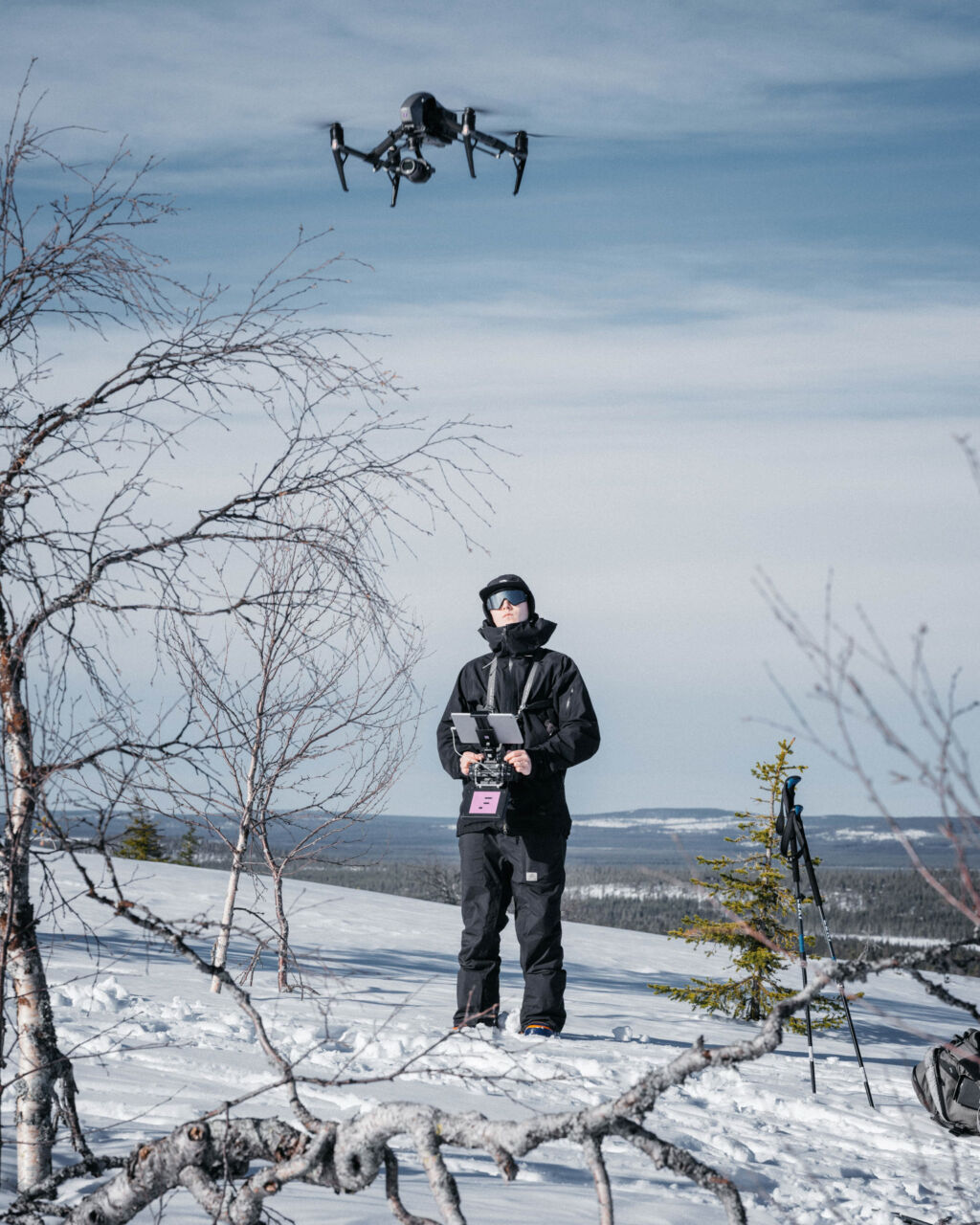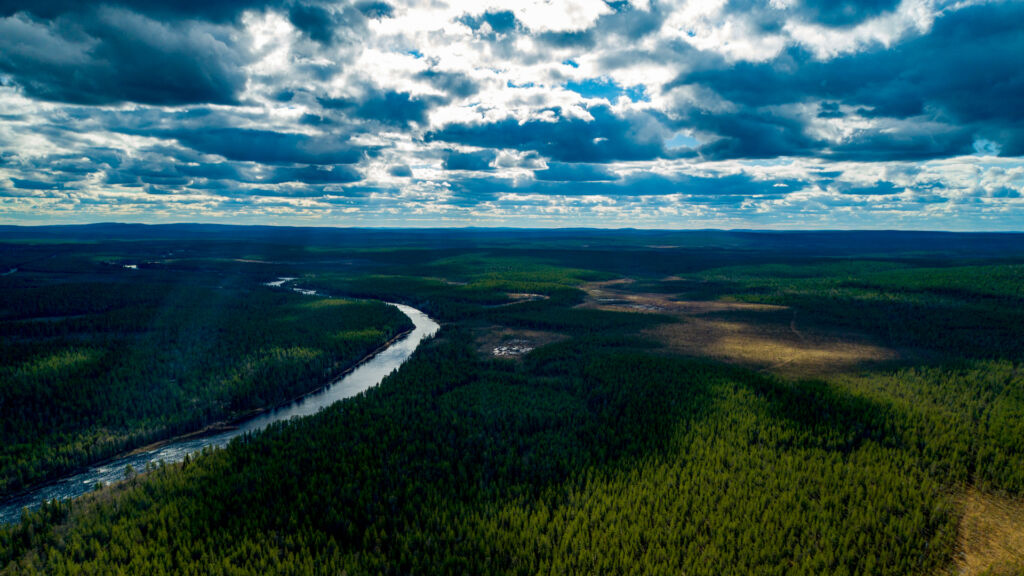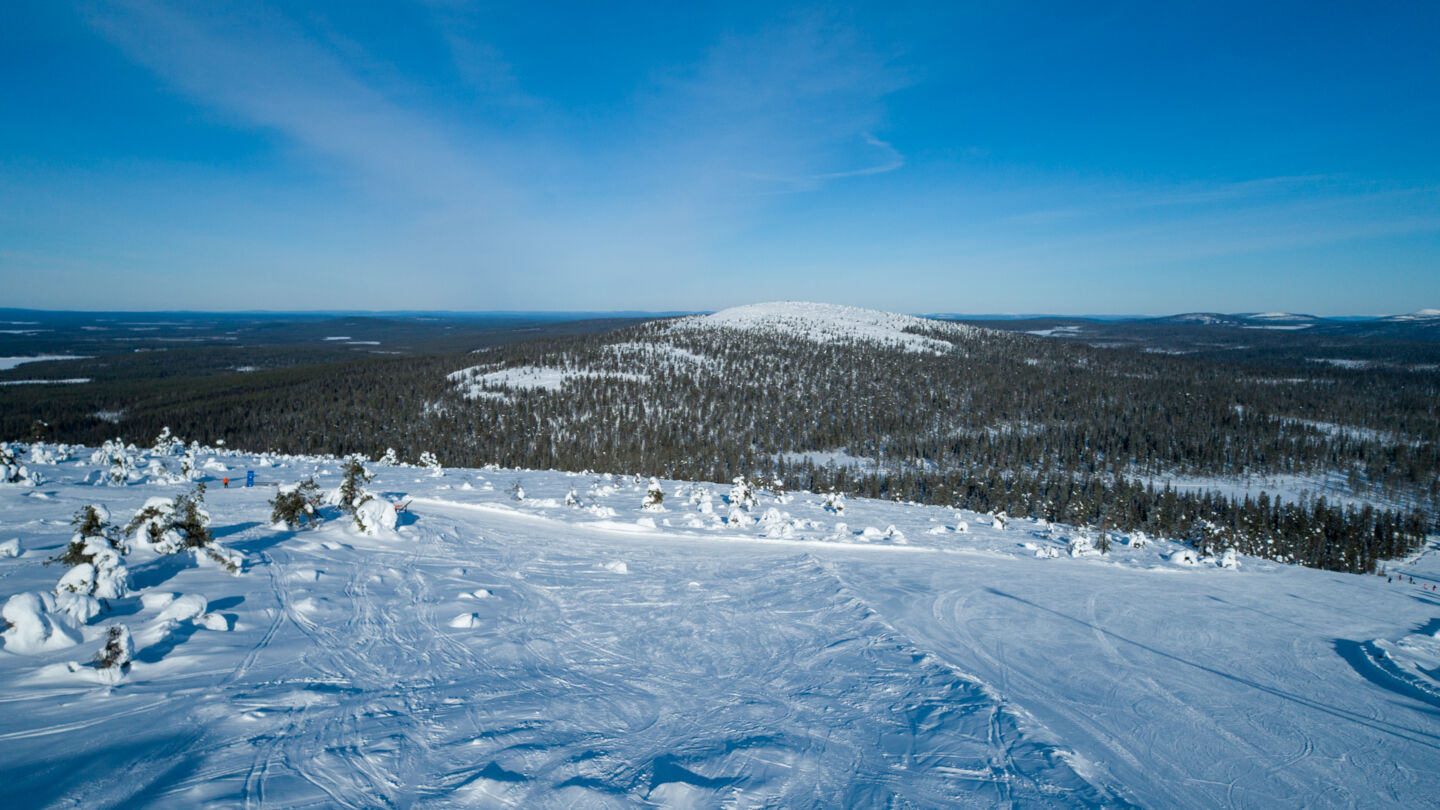Arctic Finnish Lapland is an excellent place for testing because of the cold and harsh conditions. The drone industry is growing at a tremendous pace, and it is currently also expanding to Lapland and Savukoski, where a drone test area will be established for test flights.
Various testing can be carried out in the area, such as how UAV (unmanned aerial vehicle) equipment operates in Arctic conditions, how devices work outside of the network or what effect higher flying altitudes have. In addition, the area allows digital aviation to be researched. The nature of the testing depends on the relevant organization or the operator’s objectives.
– If the equipment works at these latitudes, it will work everywhere, assures Christian Gummerus, Founder of Arctic Ax Corporation.
Savukoski is an excellent location to carry out drone testing due to its wilderness-like environment. During testing, it is important to ensure aviation safety. For example, other air traffic, tall buildings and masts may cause risks.
– Savukoski is a unique place to carry out such testing, says Gummerus and continues, – It is away from scheduled traffic and other air traffic. There are no distractions for testing operations in the sky or on land.
When testing aviation above the field of view, it is important to know where possible obstacles are.
“Lapland has a lot of potential”
Savukoski’s drone testing area has not yet been opened but the process is ongoing, and it is estimated that the area will be opened this summer 2022.
– Lapland has a lot of potential, which has not yet been utilized or has not been able to be marketed.
Gummerus thanks the Municipality of Savukoski for its willingness to participate in the project, be involved in generating ideas, and warm welcome.
– Savukoski is a nice fit for this kind of condition testing, and it’s great that there’s development work done, and new business models being generated. Also, drone testing supports the sustainable development efforts in Eastern Lapland, tells Director of Business and Rural Services of the Municipality of Savukoski, Pinja Siivola.
Gummerus hopes collaboration can be increased with other municipalities. In addition, he encourages young people in the area to take part in the development of aviation and the invention of business models.
Gummerus’ Arctic Ax Corporation carries out regional development work in Eastern Lapland, such as establishing Savukoski’s test area, the development related to the breakthrough of digital aviation, tourism development, and consultancy.
Drones, useful tools for many sectors in Lapland
UAVs are used in many industries, including forestry, construction, climatology, agriculture, firefighting and rescue operations. Drones are a diverse tool. In Lapland, drones are utilized in work tasks in the tourism industry, mining industry, reindeer herding, logistics and forestry.
Drones are used to map areas and sites, collect information and enhance inspection operations. They can be used to carry out volume measurements, 3D modelling, search for missing people, and lots more.
For example, the inspection of bridges and containers is hard work, time-consuming and expensive, but UAVs allow the inspections to be carried out quicker and more efficiently. In forestry, drones are used to, for example, carry out inventories and study storms and damages caused by insects.

Unmanned aerial vehicles can also improve ecological sustainability in business sectors. Since the devices are mainly electric-operated, they do not produce emissions in the same way as other aviation traffic.
– Drones provide efficiency and are part of the transition to a green economy, says Gummerus.
When UAVs are utilized in, for example, logistics or the inspection of infrastructure, there are fewer carbon emissions because traditional vehicles are not relied on, and short-distance operations can be completed without emissions.
Drone development is currently studying how a UAV flock could be utilized, how flights are automated, and what new business models can be developed around the devices. Although unmanned aerial vehicles are not yet suitable for all business sectors, they are still ideal for many different tasks, and new uses are constantly being developed. At the same time, legislation must keep up. For example, drone flocks are used abroad to spread fertilizers and pesticides, which is not possible in Finland with its current legislation.

The growing drone industry is full of opportunities
How large of an industry are we talking about? How many drones are funded? A lot, states Christian Gummerus. Large amounts of money are invested in unmanned aerial vehicles, globally hundreds, if not thousands, of billions, but the industry is new, and there are many opportunities.
The drone industry has raised interest in Finland, too, and similarly, a lot of money is spent on development and research work in the industry. In Finland, there are entrepreneurs, SMEs and start-ups, large operators who hire equipment and train pilots, and global top-tier manufacturers.
The FUAVE project, which the Academy of Finland has funded, is an almost 1.7-million-euro project, which participants include several different Finnish operators, both private and public. For example, Arctic Ax Corporation is involved in the project. The project started in 2021.
FUAVE aims to increase the research and testing of UAVs, i.e., drones, promote the business operations of companies in the industry, connect the industry’s professionals and experts, and increase the awareness of the industry. Part of the project is the establishment of test areas, and, in addition to Savukoski, they have been opened in a few other municipalities and cities.
Due to Lapland’s challenging conditions, the test area is placed in the north. Challenges are set by the winter and coldness as well as long distances. The efficiency of UAVs has increased quickly in a short amount of time, for example, in terms of flight times, load-bearing capacity and rain, snow and frost resistance.



